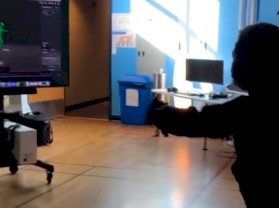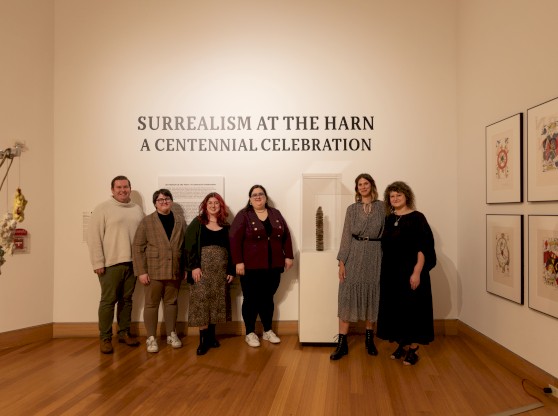JumpstART is a program that empowers students in arts, engineering, entrepreneurship and journalism through collaborative exploration, discovery, divergent thinking and professional mentorship. It is supported by the College of the Arts, the Entrepreneurship & Innovation Center, the Engineering Innovation Institute and the College of Journalism and Communications at the University of Florida.
The topic for this year’s JumpstART was: “Resilient Coastal Communities – Design for Disaster.” During the workshop, participants were divided into six groups and asked to draft solutions for the problems facing coastal communities.
The event was limited to to only 40 students from the collaborating colleges. Each student was selected by the respective collaboration partners in each college, according to Jamie Kraft, director of the the Entrepreneurship & Innovation Center in the Warrington College of Business.
Kraft said that Anna Calluori Holcombe, professor of ceramics in the UF School of Art and Art History, wanted to come up with a collaborative workshop that would bring entrepreneur and artist students together and the resulting project was JumpstART.
“In 2008, Anna Calluori Holcombe and I we’re introduced with the idea that we might come up with a collaborative program to bring entrepreneurship and arts students together the result was JumpstART,” he said. “We have been working together ever since, delivering a workshop every year addressing creative entrepreneurial ideation and design thinking. Several additional partners have been added along the way including the Herbert Wertheim College of Engineering’s Innovation Institute and the College of Journalism and Communications. In addition, Duane Bray, Partner, IDEO and UF arts alum, joined the partnership in 2011.”
The student teams were told not to think of the activity as a competition and that all of the great ideas would be rewarded, according to Bray. He said that the team with the best ideas would be rewarded with entrepreneur and art books.
Kraft said that collaboration among diverse groups is a key part of JumpstART.
“Collaborative, interdisciplinary interaction is a hallmark of JumpstART and an important principle for ideation,” he said. “Bringing together diversity of thought will result in much more creative outcomes, thus leveraging different backgrounds, perspectives and experiences of each of the participants involved.”
The diversity of thought was especially evident in team four. Some in the group, such as John Kiernon-Lewis who is engineering grad student, did not understand what the point of activity was if Florida was going to end up underwater in 40 years.
“Each year the planning committee (made up of the collaboration partners) gets together to discuss topics for consideration,” he said. “This year, the School of Art + Art History discussed the notion of ‘Florida as laboratory,’ referring to state-based experiential learning opportunities for students. From there, the idea of coastline resiliency was put forth by our partners in Engineering, noting that many experts on campus are pursuing this line of research. Thus was born the topic for 2017.”
He said that he hoped that through participating in JumpstART students will become better problem solvers as well as build their network.
“The hope is that participants of JumpstART will gain valuable insight into the problem-solving methodology used by IDEO and that they will learn to apply this methodology in an experiential manner,” he said. “In addition, it expected that the interdisciplinary nature of the program will provide students with opportunities to make new connections and build their network cross-discipline.”




